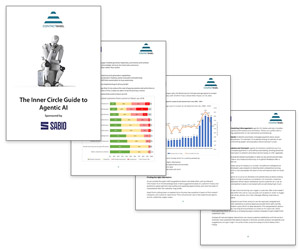Stuart Dorman explains how the need to tackle fraud is accelerating the development of voice biometrics.
When Sabio and Avaya conducted research into the security concerns of some 2,000 UK consumers, we found that over half of the respondents had real concerns about the security of their personal and financial information when engaging with organisations. At the same time, however, they also reported that they became unhappy when customer service compliance processes led to interactions that were too long and frustrating.
Balancing these two positions has always proved challenging for customer service organisations, often leading to a conflict between customer service and compliance operations, which typically serve a policing function.
Compliance is simply a fact of life in the industry
However, it’s no use customer service teams complaining. Compliance is simply a fact of life in the industry, particularly as reductions in online banking fraud losses have led to an increased criminal focus on telephone banking fraud. With compliance pressures set to remain indefinitely, it’s incumbent on customer engagement teams to find a better way to interact with customers securely.
Traditional approaches have done little to address this challenge. Indeed, identifying and verifying customers can easily take up to 25% of overall agent interaction times. This proportion increases when customers can’t actually remember passwords or memorable information – a growing issue due to the sheer volume of security details people are now expected to remember.
Verifying customers based on the unique characteristics of their voice
That’s where voice biometrics technology can help, enabling customers to be verified based on the unique characteristics of their voice, rather than what they actually say.
Voice biometrics benefits both customers and the organisations they’re calling. For example, when the call is first connected, the voice biometrics solution verifies the caller’s identity without any requirement for password details to be exchanged. The organisation benefits from much more reliable and faster security checks, while customers no longer need to remember their security information.
The good news for contact centre operators is that voice biometrics is already a proven technology that has actually been available for a number of years. An initial barrier to adoption has been the need for companies to modify their existing business processes in order to collect initial customer verification data. However, with increased pressure on fraudulent activity, as well as the development and introduction of more sophisticated applications, voice biometrics adoption is set to accelerate.
Voice biometrics works especially well for those applications where customers are likely to contact more frequently. So while functions such as insurance renewals – where contact is typically annual – are less applicable, processes that require more frequent customer identification and verification, and that target large volumes of customers – are much more suitable.
In the financial services sector, passive voice biometric verification – that runs in the background to verify callers in normal conversation – is proving successful. Here the voice biometrics approach provides customers with an immediate and seamless way of verifying their identity – removing the requirement for more complex and time-consuming approaches.
Barclays uses voice biometrics for customer authentication
One organisation that has successfully deployed voice biometrics for its customer authentication is Barclays Wealth & Investment Management. Using a passive voice biometrics approach, Barclays has transitioned from a process that took up to four and a half minutes of customer time to ID, to an approach that takes just 20 to 30 seconds of natural conversation to achieve verification.
It’s proving popular with customers. Since its introduction, more than 84% of Barclays Wealth customers have enrolled in the voice biometrics programme, with more than 93% of customers rating it as at least 9/10 for speed, ease-of-use and security.
Where customers were previously frustrated by the bank’s traditional knowledge-based authentication service, the customer experience has been transformed with a telephony security approach that has not only reduced customer effort but also effectively personalises every call.
The customer is matched to their previously enrolled voiceprint
During the opening seconds of any call with an agent, the voice biometrics solutions matches a customer’s voice against their previously enrolled voiceprint. This returns a verification result to the agent and, assuming the match is positive, accesses the CRM system and loads the customer’s account management information.
Barclays has shown how, by adopting a truly innovative voice biometrics solution – the first in their industry, it has succeeded in transforming the experience offered to customers. For other organisations investigating potential voice biometrics projects, there are now clear benefits over and above standard optimisation targets such as reducing call times and a subsequent reduction in contact centre agent costs.

Stuart Dorman
I find that there is still a perception that voice biometrics is expensive to deploy. That may have been the case several years ago, but the reality now is that the ROI and business benefits are potentially very rewarding.
Where voice biometrics can really deliver is in terms of supporting and encouraging higher value e-commerce transactions, enhancing service availability and reducing overall customer effort levels, and reducing the cost of managing fraud. These kinds of benefits – particularly when applied to the challenge of improving the identification and verification of larger customer bases – can more than offset the time needed to adapt processes to support the use of voice biometrics.
With thanks to Stuart Dorman at Sabio
Author: Megan Jones
Published On: 17th Dec 2014 - Last modified: 12th Dec 2018
Read more about - Archived Content, Biometrics, Sabio











Very interesting article. Most retail banks (UK) were forced to end their Voice Biometric initiatives back in 2008/9 following the financial crisis; it’s therefore good to see the Barclays’ deployment helping to put Voice Biometrics back on the agenda for high-volume Customer ID&V.
The technology can also be useful for internal processes; I’ve spoken to a number of companies with high volume human resource and sensitive data environments, such as Contact Centres, who are interested in Voice Biometrics to ‘prove’ temporary staff are who they claim to be when they turn up for work.